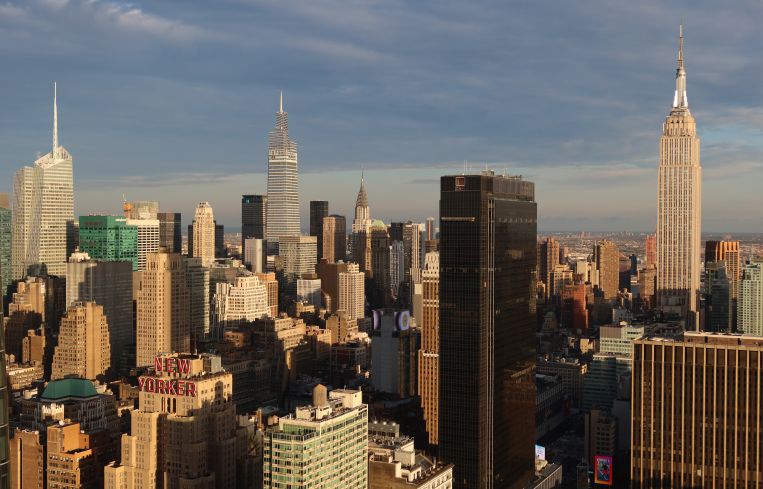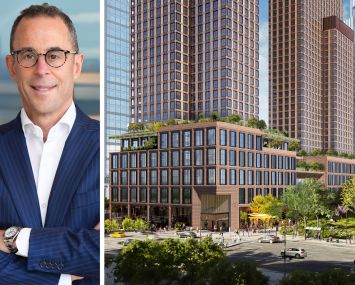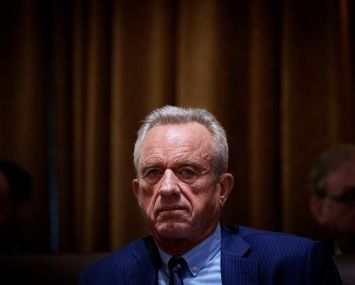Commercial Real Estate’s Challenges Collide With NYC’s Tax Rolls
The industry sees a discrepancy between zig-zagging assessed market values and shares of the tax burden
By Abigail Nehring January 12, 2024 6:00 am
reprints
`Tis the season. And not a jolly one.
The New York City Department of Finance sent 1.1 million property valuations to owners earlier this month. It’s the perfunctory New Year’s tradition that kicks off a six-month window of wrangling over the city’s math before the assessment roll is finalized and taxes come due in July.
Commercial properties accounted for 21.3 percent of total market value of the city’s real estate last year, according to the final assessment roll. But they shared 38.8 percent of last year’s property tax levy.
For New York City office buildings, that works out to a tax of $14.71 per square foot.
At the height of the pandemic, city assessors acted decisively to stave off a conjectural real estate doomsday, forcing a correction the following year. Owners experienced the changes as erratic, and are now more apprehensive about certain steps in the process — especially the city’s annual cap rate adjustment and income and expense guidelines.
The sector’s outsized contribution to the city’s coffers has also made it a confounding factor in drawing up a balanced budget this year.
“The expiration of billions in federal COVID-19 stimulus dollars, slowing economic growth, real estate challenges — such as commercial office vacancies — and weakening residential home sales, and under-budgeted costs are the underlying drivers of our budget gaps,” City Council Speaker Adrienne Adams warned in a budget hearing last month.
The sawtooth pattern of New York City’s property tax revenue took shape in the second year of the COVID-19 pandemic, when city assessors projected a dramatic drop in property values based on their analysis of income and expense reports filed by commercial and multifamily landlords in 2020.
For Manhattan Class A office buildings, the prognosis in 2022 was an 18 percent decline in income year-over-year. Retail properties in Manhattan and Downtown Brooklyn were given an even more dire 24.8 percent projected drop in income. And, for rent-stabilized multifamily buildings, the loss in income ranged from 5.8 percent to 8.3 percent.
As a result, property tax revenue fell an unprecedented 6 percent in 2022, according to City Comptroller Brad Lander’s annual financial report that year. The following year, the city reversed course, bringing the property tax levy back to its pre-pandemic level.
Such dramatic year-to-year swings are not the norm, said Ana Champeny, vice president for research at the Citizens Budget Commission, a nonprofit think tank.
“Property tax, prior to COVID, was recognized as the most stable of the city’s tax revenues,” Champeny said.
Now the city’s fiscal monitors are predicting subdued growth for the next three years, with the Mayor’s Office of Management and Budget forecasting a conservative 1 percent average annual growth in property tax revenue from 2024 through 2027. The City Council added its counterpoint in November with a budget forecast that included 2.8 percent average annual property tax revenue growth during the same period.
The city comptroller’s office falls in between.
“This is not a cliff, but a headwind. There will be continued slow growth,” said Francesco Brindisi, the executive deputy comptroller for finance and budget.
The revenue dip in 2022 was offset by income tax revenue that year, Brindisi added.
“We had historically high personal income tax in those years,” he added. “This year is a slightly different story, but diversification has helped us in the past and is going to help us in the future. Though I don’t think anybody expects to return to the pre-pandemic trend.”
In a report released Jan. 11, the city’s Independent Budget Office (IBO) laid out three property tax scenarios that ranged from the rosy “Baseline” revenue growth of 3.2 percent annually to the dour “Office Doomsday” rate of 2 percent, which leads to a $1.3 billion difference in revenue estimates by 2027.
Last is “No Class 2 or 4 Growth,” which is an Armageddon-type scenario where both residential and office incomes are significantly curtailed by a macroeconomic downturn, resulting in a $2.4 billion reduction in revenue in 2027.
As if property taxes weren’t unpopular enough, the scenarios capture New Yorkers’ anxiety about ripple effects from a continuing decline in commercial leasing activity and a possible string of defaults in the office sector.
“People have been working at home too long, and you can’t put the toothpaste back in the tube,” said real estate appraiser Jonathan Miller.
But, Miller added, no one can make market observations based on a hunch. A crop of new research questions, such as how to accurately measure office occupancy and leasing trends like concessions, has left him stumped.
“If you read anything about the commercial world, the only topic ever discussed is leasing activity, and, hey, it’s normalizing,” Miller said. “But there’s no talk about price. Why is that? Because the people providing the data are brokers.”
The dearth of high-quality information makes future property tax revenue that much more difficult to predict.
Property taxes comprise the biggest chunk of the city’s tax revenue — contributing 43.1 percent of last year’s total collections. Their stability over the past four decades is thanks to various mechanisms that phase in assessment increases incrementally, limit adjustments to the tax rate, and distribute the levy between single-family homes; multifamily buildings, co-ops and condos; utilities; and commercial properties in more or less consistent proportions from one year to the next.
“In theory, it’s a fairly straightforward operation,” said George Sweeting, a senior fellow at the New School Center for New York City Affairs, who has been studying New York property taxes for 30 years.
“First you figure out the value of properties, usually by comparing them to ones that have recently sold, and that becomes your assessment,” Sweeting said. “And then the jurisdiction figures out how much money it needs to raise from the property tax, taking into account political considerations since no one wants to see their taxes go up. Then you set a rate and you’re done.”
It sounds easy enough. But the city’s assessment process over the last four years shows things clearly went awry during the COVID-19 pandemic, with property tax revenue dipping an unprecedented 6 percent in 2022 and then spiking 7 percent the following year.
The impact has left commercial real estate owners particularly disgruntled.
The city arrives at valuations for commercial and large residential buildings using income and expense information that landlords are required to file every year and cap rates set annually by the city Finance Department without much explanation.
To complicate matters further, there is a two-year lag between the newest round of income and expense filings and the tax bill the city ultimately derives from them.
The rapid changes owners experienced during the pandemic-era exodus from New York City, and subsequent federal interest rate hikes, contributed to the sense of tone-deafness in property assessments the past two years.
“While they may see income continuing to trend, the cost to generate that income is so much greater than it was historically that it feels to us like there’s a big problem that’s not being captured in their models,” said Alexis Tener, an attorney and member of consultancy Tener Petrus Associates. “The question is, how long can owners sustain that level of hit?”
An independent analysis by Sweeting suggests that commercial properties share a more modest 15.5 percent of the total market value, implying an even higher burden of the levy relative to the other tax classes.
That’s if you redo the math using actual sales data, Sweeting explained. The city’s system is convoluted; it undervalues single-family homes as a tax class, while overvaluing multifamily residential buildings.
This is more or less by design.
“It goes back to the politics of the 1981 law,” Sweeting said, referring to a state legislative action that codified the city’s property tax system. “It’s basically designed to lock in the relationship between the classes that existed in ’81 with room for only small adjustments year to year.”
In fact, commercial buildings’ share of the tax levy peaked in the early 1990s at 53 percent, then dipped and hovered around 40 percent for most of this century.
It has lately been inching down further, reaching a record low of 38.8 percent last year, according to the city’s final tax roll released in May.
People who study this stuff tend to use recurring descriptors like “opaque,” “murky,” “inscrutable” and “byzantine.”
To owners, the assessment fluctuations often seem arbitrary. At the highest end of the market, taxable assessed value can leap by more than $1 million in a single year, and the top 10 largest property taxpayers move up and down in the ranks published by the city comptroller’s office annually.
Sweeting, for his part, said the city’s methodology in setting cap rates the past two years and determining property income and expense bands has evaded even him.
“I think it’s fair to say that the city clearly went too far in trying to anticipate that there would be a really big and quick effect on property values from COVID,” Sweeting said. “And so they took the values down in Class 4 by like 16 percent. Certainly since 1981, there’s never been a drop like that. And, then, in the next year, they went back to their more traditional methods.
“I don’t know if it was deliberate or not.”
Abigail Nehring can be reached at anehring@commercialobserver.com.


